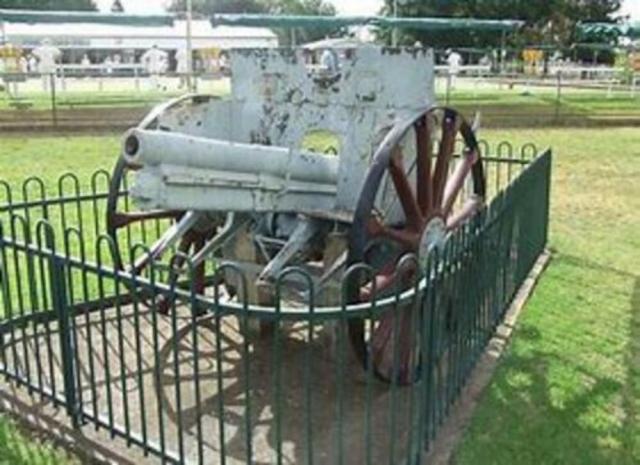By John Skinner
While most long-term Warwick residents have heard a little of the history of the Krupp Cannon in the Cenotaph precinct, others have no knowledge of how it came to be where it is.
The cannon saw service with the German military during World War I and was in the Somme Valley in France when captured by the Australian 26th Infantry Battalion.
Krupp Engineering, which still exists in Germany today, is a large engineering company which manufactured many of the artillery pieces used by their country during both WWI and WWII.
The WWI cannons were all marked with the Royal Seal of Kaiser Willem II and the seal can still be clearly seen on the cannon at the Cenotaph.
When the 26th Battalion captured the cannon, it had one broken wheel so the men of the unit found a similar wheel on a destroyed cannon and fitted it to the one now in Warwick. Somewhere during its life in Warwick, one of the wheels was removed and replaced with a matching wheel and no-one can tell me if it was the original wheel or the replacement wheel.
The cannon was shipped to Australia with thousands of other war trophies and placed in storage while decisions were made as to where these different items would be placed.
Warwick was nominated to have the Krupp Cannon and the smaller trench mortar which sits beside its larger ‘mate’ near the Cenotaph, for which I can find no history.
In 1922, both war trophies were consigned to South Brisbane and left in the railway yard there. Apparently no funding was available to transport any of these trophies to their country destinations.
Following several debates on the cost of transportation, Warwick’s then Mayor, R.E. Gillam, had the council pay the freight and the cannon and trench mortar eventually arrived in Warwick.
Two articles in the local paper of the time described how the cannon was towed by truck along the then gravel King and Palmerin streets to the quoits court where they remain until this day.
The foundation stone of the Cenotaph was laid in June 1923 and was completed in December the same year which allowed the cannon and the trench mortar to be placed in position as a reminder of the lives lost and the futility of war.
Warwick’s ANZAC Day services will again be centred on the 100-year-old Cenotaph on April 25th, starting with a Dawn Service at 5.25am.







